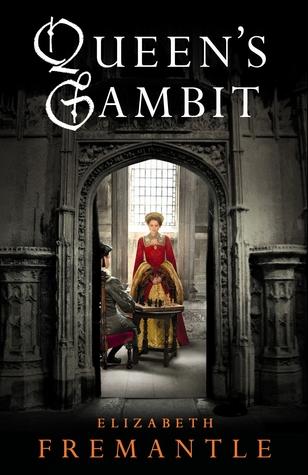
I know that I’ve said on here that I’m a little bit bored with novels about Henry VIII and his six wives, however I’m willing to make an exception for really great books like Wolf Hall, Bring up the Bodies and now Queen’s Gambit by Elizabeth Fremantle, which focusses on Catherine Parr.
So which one of Henry’s wives is your favourite? It really does seem like there’s one for everyone, doesn’t there? I have to admit that Anne Boleyn had me in thrall from early childhood onwards but just lately I’ve ditched her (sorry Anne!) for Catherine Parr as I feel like, I dunno, maybe she’s more my sort of gal – redheaded, clever, fun loving, fond of writing and with a fatal weakness for bad boys.
What I find really interesting about Catherine though, and this says a lot more about us than her really, is the way that she has been consistently depicted as being er rather more matronly than Henry’s other wives, even though she was only thirty one when she became Henry’s Queen and just thirty five when he died – which may have been considered a tad long in the tooth at the time but nowadays, not so much.
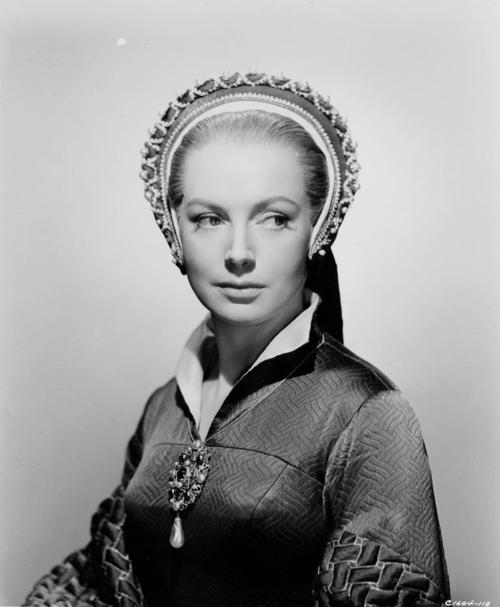
Deborah Kerr as Catherine Parr in Young Bess, 1953.
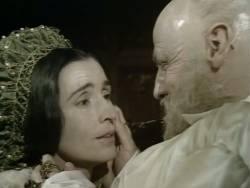
Rosalie Crutchley played Catherine Parr in The Six Wives of Henry VIII (1970) and Elizabeth R (1971). Still, at least she doesn’t actively give me nightmares unlike Angela Pleasence’s eerily grinning eighty year old Catherine Howard.
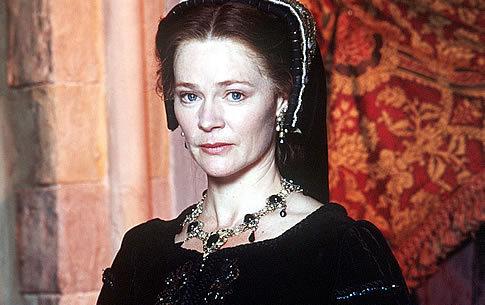
Clare Colman as Catherine Parr in Henry VIII, 2003.
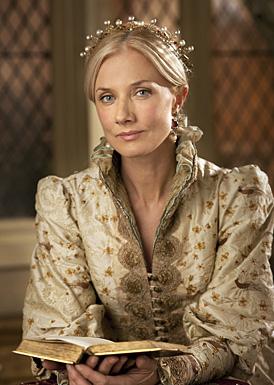
Joely Richardson as Catherine Parr in The Tudors, 2010.
Anyway, poor Catherine has, I think, suffered in this respect for a variety of reasons, namely proximity in the order of wives to the exceedingly and depressingly youthful Catherine Howard, her rôle as ‘nurse’ to the elderly King, her own intellectual character and, above all, the need some have to typecast Henry’s wives into neat little boxes as the ‘religious one’, ‘seductress’, ‘the mother’, ‘the ugly one’, ‘the tart’ and ‘the old one’. None of which I think is at all fair and it shows up how far women’s history has to go when we still have to work hard to challenge these one dimensional, dismissive depictions and represent them as they really were – living, breathing, vital women with actual personalities.
Needless to say, there is none of this sort of thing going on in Queen’s Gambit, which is a superb retelling of Catherine’s life within the Tudor court between the death of her husband, Lord Latimer in 1543 and her own death in childbirth in September 1548 – a period that saw her own rather bullying wooing by Henry VIII and subsequent marriage to him, several attempts by the Catholic lot to arrange her downfall, Henry’s death and then her fourth and final marriage to Jane Seymour’s better looking but less clever brother Thomas. There’s a lot of ups and downs in this book, mostly downs in fact, but Catherine’s personality is so inherently positive and joyous that it never makes for a depressing read, quite the reverse in fact – there’s a lightness of touch here that manages to simultaneously bring the dangerous, decadent Tudor court to vivid life while at the same time remind the reader that these were real people once upon a time.

Catherine Parr, attributed to Master John, c1545. Photo: National Portrait Gallery, London.
Queen’s Gambit isn’t entirely told from Catherine’s point of view – much of the book focusses on the story of her fiercely loyal maid, Dot, a country girl who goes with Catherine to London and there falls in love and has various adventures. Quite a lot of books are written this way at the moment – echoing, I suppose a rather fashionable Downton Abbey dual focus on both the rich people upstairs and the servants down below, through which the viewer or reader is invited to glimpse a more rounded and nuanced view of society as viewed from the vastly different perspectives of the lowliest chamber maid and the grandest Duchess. I don’t, to be honest, always enjoy this but in this case I was equally enthralled by Dot’s story and at times really cheerleading her on. She was a great character, really sparky, funny and sweet.
The most notable thing, I think, about Queen’s Gambit though is that there was no dull plodding along and sticking to the facts here à la Jean Plaidy, but rather the reader was treated to some really interesting and unique interpretations of the scandalous goings on at Henry VIII’s and Edward VI’s court. There were some real clutch the pearls moments, which I won’t ruin for other readers but I really enjoyed Fremantle’s spin on some of the things that were perhaps going on behind the scenes and, more crucially, the real life personages in Catherine’s circle, particularly with regard to Lady Or Sometimes Princess Elizabeth, who is quite the little madam in this book whereas her cousin Lady Jane Grey isn’t the sour faced little miss prunes and prisms that has become more prevalent over recent years but is instead very different. I really enjoyed her take on Thomas Seymour as well, who was undoubtedly hot but clearly as thick as mince.
I’ve always felt that he was punching above his weight when it came to Catherine, even if the usual vogue is to make it seem like he was some sort of on the make toyboy winning the matronly and very wealthy Catherine over with his oily blandishments and flashing blue eyes – ignoring the fact that he was actually three years her senior.
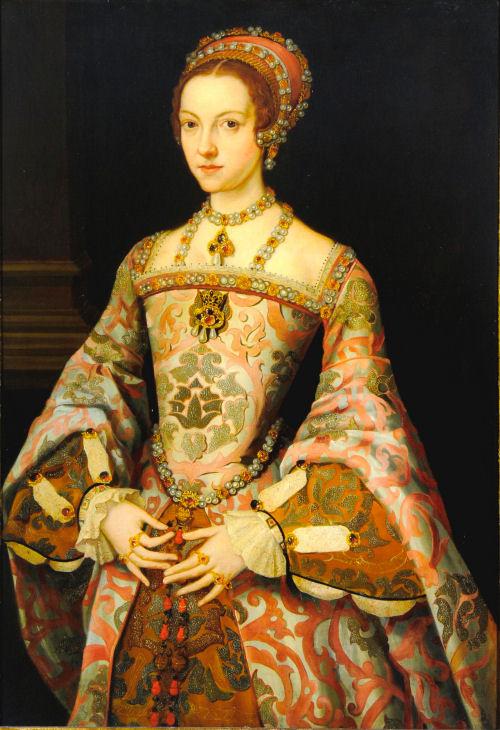
Catherine Parr, unknown artist, c1545. Photo: Private Collection/National Trust. I find it interesting that there’s been a recent movement to reattribute portraits traditionally supposed to depict the adolescent Lady Jane Grey as Catherine Parr instead – which is one in THE FACE of the ‘matronly sixth Queen brigade’, I suppose.
In summary, if you like Tudor set novels then you will almost certainly love this. It’s definitely one that can be enjoyed both by fans of Wolf Hall and Jean Plaidy alike, giving as it does a darkly humorous, vivid and gripping depiction of the vicious Tudor court in the final years of Henry’s reign.
******
‘Frothy, light hearted, gorgeous. The perfect summer read.’ Minette, my novel of 17th century posh doom and intrigue is now £2.02 from Amazon UK and $2.99 from Amazon US.
We’ll be saying a sad goodbye to Google Reader at the end of this month. Please don’t forget to subscribe via one of the links on my blog sidebar so that we can still stay in touch!
